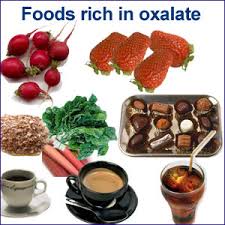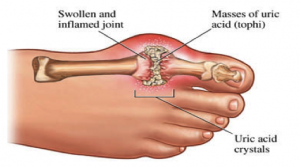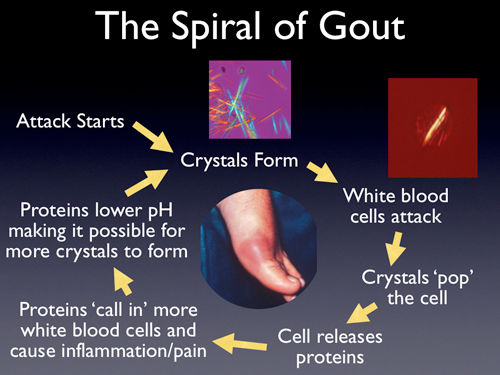Gout is an inflammatory disease affecting the joints , commonly the big toe of the foot, the mid foot or the ankle. This is caused by an increased level of uric acid in the blood. Purines break down inside the body to form uric acid. When there is too much of purine intake or when there is less of excretion of uric acid by the kidneys, it leads to an increase in the body.
A lot of people are affected by this and often are mistaken for having fractures and land up having X-rays taken. The pain is excruciating and can make life miserable to a point where common chores such as walking, standing, driving are so much limited.
Hyperuricemia ( high levels of uric acid) are associated with the following:

• Abdominal obesity
• Associated with diabetes mellitus type 2
• Associated with metabolic syndrome
• Joint destruction with recurrent attacks
• Stones in the urinary system- these cannot be seen in normal X-Rays as it does not block the X -rays. Uric acid stones are smooth rounded and so may not cause blood in urine.
• Generally males are affected more. Women after menopause can be affected.
Stages in Gout
• Hyperuricemia- high uric acid levels in blood.
• Precipitation of uric acid crystals in the joints ( commonly the base of the big toe, mid foot joints or ankle)
• Acute pain and swelling of the foot or joints. The skin may be reddened which is why it is often mistaken for an abscess.
• Chronic inflammation leading on to joint destruction and change in bone shape. This can lead to Tophi ( pronounced as TOE-fi)
What precipitates high uric acid levels? :


• Being exposed to very cold climate
• Binge drinking of alcohol
• Red wine in excess of 2 units/day
• Tea in excess of 4 cups a day ( whether green or black)
• Coffee in excess of 4 cups a day.
• Dark chocolate in excess
• Food such as mushrooms, asparagus, anchovies, moong beans, lentils, soya beans, white beans and raisins.
• Sea food such as mussels, lobster, shrimps or prawns, scallops, salmon and tuna.
• Rabbit meat, duck meat, turkey, chicken, Pork, salmon, beef and mutton.
• Some medicines for blood pressure, medicines taken for preventing rejection after organ transplant, those on cancer chemotherapy and low dose aspirin.
• Drastic weight loss measures.
• Dehydration
• To vigorous an exercise regime
• Too much of sugar sweetened carbonated beverages
What are the gout friendly food items ?:
• Fruits such as apples, figs, bananas, pineapples, grapes, cherries, water melon, grape fruits, papaya, peaches, pears, guavas, lemon, orange, strawberries.
• Vegetables such as celery, egg plant, onion, lettuce, cabbage, cucumber, ginger
• Tofu, eggs, low fat dairy, sesame seeds, cereals, vitamin C, nut butter.
Beware the sugar content of some of the food items listed above.
Interestingly, the high blood sugar levels can help in excretion of uric acid by the kidney. Thus, when the sugar levels improve, the uric acid levels can increase leading onto a flare.
How to prevent gout:
• Adequate water or fluid intake
• Avoid the precipitating factors
• Consume the gout friendly food
• Maintain a healthy lifestyle and prevent being overweight or obese.
• Avoid sugar sweetened beverages
How to treat:
• Meet the doctor.
• Ice cubes to be used for fomentation of the affected areas.
• Pain killers such as Indomethacin or Naproxen or Sulindac are preferred. However noted pain killers such as Ibuprofen ( Cataflam®) or diclofenac ( voltaren®) will not always be effective.
• Colchicine to be used within the first 24 hours of an attack helps.
• Oral Steroids ( prednisolone) in high doses can be used to reduce the inflammation. Some need an injection of steroids into the joints to relieve the pain.
• After the acute attack is subsided, allopurinol can be used to prevent the flares. Taking this during an acute attack may cause worsening of the attack.
• Sometimes Probenecid is advised by the doctor along with the other medicines to help in excretion of uric acid.















